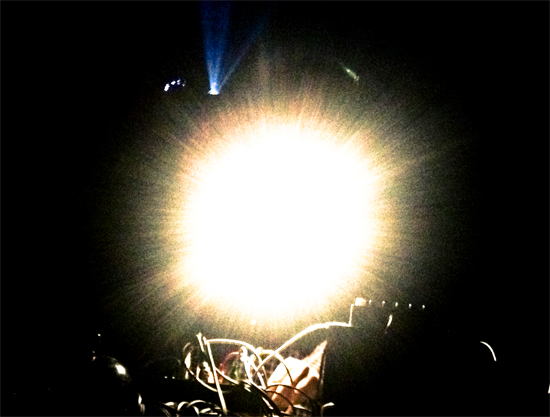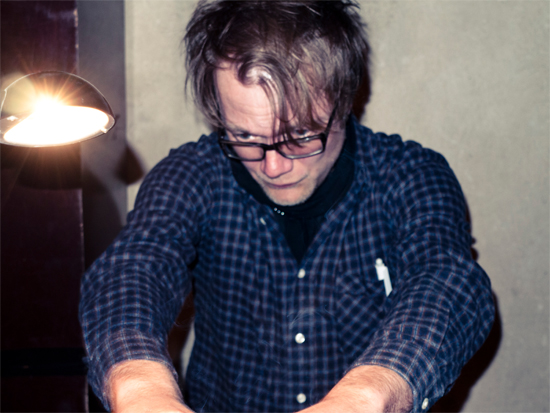By the time Dirk Dresselhaus, aka Schneider TM, moved apartment a couple of years back, it was into a newly constructed, environmentally friendly building in the north of Berlin’s already gentrified Prenzlauerberg district. He had worked with the architect to ensure that his apartment would suit his needs, and the cellar contained a soundproofed room that he could use as a studio. The place lies beside the Ring-Bahn, the 37.5km stretch of railway that encircles central Berlin, but there was little danger that he would find himself bothered by the noise of trains. After the experiences of the previous few years, this would be quiet in comparison.
Schneider had previously lived in Immanuelkirchstraße, three kilometres to the east. It was an old apartment, its wooden floorboards creaking, the sound of neighbours returning home late at night and tumbling up the stairs easily audible. But this was nothing compared to the disturbances that would follow when they began to renovate the building in 2002. "Berlin ist eine Stadt, die nie fertig ist," they say here – "Berlin is a city that’s never ready" – and in his little neighbourhood that must soon have felt like a taunt. Even when they finished work on his building, activity started on another next door, and as that was finished, they commenced on yet another nearby. He lived there until November 2009. Work was still in progress when he left.
Schneider tried to continue with his life, and soon the disruption became little more than background noise. Then something interesting happened: he began to hear music in it. His musical tastes had shifted over the years, from the indie rock of his bands Hip Young Things and Locust Fudge, with which he’d cut his teeth in the 1990s, to the swirling indie-electronica of his solo project, which birthed eccentric pop gems like ‘Frogtoise’ or ‘Reality Check’ and – with the help of his colleague KPT.Michi.Gan – ‘The Light 3000’, a spellbinding cover of The Smith’s ‘There’s A Light That Never Goes Out’, number 8 in John Peel’s Festive 50 of 2000. Since the release of his last Schneider TM album in 2006, however, he’d begun a voyage into a freeform world of noise, drones and experimentation.
He began collaborating – with Pan Sonic’s Ilpo Väisänen (under the name Angel), with Jochen Arbeit (of Einstürzende Neubauten) and Can’s legendary Damo Suzuki. Soon, as he puts it, he "surrendered": to the drilling and destruction, to the crashes and construction all around him. Sometimes they were "a pain in the ass," he recently told local website Slow Travel Berlin, but at other times they were "much more beautiful than human-made music as it is not happening on purpose but by chance. Cosmic music, so to speak." He recorded the noises – from the window of his sitting room-cum-studio, or while lying in bed, sometimes even stopping work on other music when it became impossible to record but still letting the tape run – and then, using the hours and hours of material he had accumulated, he began work on Construction Sounds.

Tonight Schneider TM performs the results live for only the third time. The record’s ready ¬- lined up for release in the autumn, he hopes – but the Bielefeld-born musician, known for an almost childlike enthusiasm that exists alongside a passionate intensity, can’t wait to play it live. The setting is Ausland, a small club only a short walk from his new home, set back from the cobbled street and down steps into the cellar where it reveals a welcome shabby chic. His friend Mika Vainio (also of Pan Sonic) sets the tone for what lies ahead by playing Whitehouse and electronically deconstructing country songs as the audience hands over small change for bottles of Pilsener Urquell from the bar. And then Schneider moves to the front of the room, a scarf wrapped round his neck, a pen clipped to the pocket of his check shirt as though he’s a technician about to take notes, and buries his hands in a nest of wires attaching effects boxes, mixers and a Macbook.
An hour of sounds pieced together from the din of a building site and then subjected to what amounts to electric shock therapy: to a select few this could be heaven, while to others it represents nothing but hell. A year ago I was one of the latter – when I ran into him at a show in another Berlin venue and listened to him gushing about the project, it was all I could do to stop myself rolling my eyes. (In the interests of disclosure, I had worked with him at his previous label, City Slang Records, and had at times sat in that Immanuelkirchstraße apartment while he played me his latest discoveries – field recordings of pygmy music, for instance – knowing that, over the years, our musical tastes had diverged significantly.) But the more he discussed his concept, the more I could see that he was deeply committed to it, and it was a performance he gave at last year’s MadeiraDig festival that had finally opened my ears to the wonders of experimental music and improvisation.
So I’m open to the idea of seeing what he’s done with the last few years of kling und klang, and to my delight, he doesn’t disappoint. Part of the performance’s appeal is that, unlike many comparable exercises, it offers a narrative. It’s not so much in the music’s arrangement, though there is undoubtedly order in what we’re hearing, but in the story that lies behind it. As he twists and turns the dials on his equipment, sounds both recognisable and otherwise pierce the air: the sound of concrete rubble poured down a chute, the shattering of glass, the high pitched hiss of sanding equipment, the chime of scaffolding being struck. He’s following a noble tradition, of course: another Berlin based act, Einstürzende Neubauten have, after all, been experimenting with genuinely industrial noises since the early 1980s. But Schneider’s fascination isn’t so much in integrating noise into his art as finding the art in the noise itself.
It begins quietly, emphasising the fact that this isn’t all about digitally recreating the kind of cacophony amidst which he lived so long. That would be simply too easy. Instead it seeks somehow to reflect the mental experience of being there, a period in his life when he "had constant feelings of anger, sadness and depression because the area I lived in got somehow destroyed and gentrified. Relationships broke. It really felt and sounded like a war for a couple of years and it almost sent me to a mental hospital." Construction Sounds distills this experience, highlighting how noises become a part of the fabric of our lives in the city, how they are always there on the edges of our consciousness, influencing us, affecting us, soundtracking our lives.
There are passages where Schneider makes eerie bass frequencies rattle the very window frames of the club – almost as though it’s payback time – and others where he tweaks his recordings so that all that emerges is a distant whizzing and popping, though he insists that he worked hard "to not overly process the material". At times the quadrophonic setup means that we’re surprised by the sudden emergence of unexpected textures behind us, or to either side of us, and then there are periods where it seems he’s regenerating the extended roar at the end of My Bloody Valentine’s ‘You Made Me Realise’. It’s unpredictable, but both invigorating and comforting: the multiple layers of sound seem to separate, like leaves of gritty filo pastry, revealing the "cosmic music" to which Schneider has referred.
Towards the end, a recognisable rhythm starts to materialise, one of his trademark aqueous and yet metallic patterns that initially appears as confusing and disorientating as the rest of the evening’s performance but, like everything that’s preceded it, slowly seems to settle into some kind of sense. Then, finally, peace descends upon the club. For a moment there’s silence, as though the workers are merely taking a tea break. It doesn’t last long, though. Applause breaks out, bar staff start clearing bottles away, Mika Vainio begins to spin records, and conversations are again established.
Schneider TM grins quietly and reaches for a cigarette. Construction Sounds is complete. Work is done. As John Cage pointed out, "music is everywhere. You just have to have the ears to hear it." Such is the very foundations upon which Schneider TM has built one of the year’s more fascinating and most immersive musical experiences. They say that gentrification is spoiling Berlin, but he’s found a way to exploit it that captures the spirit of the city rather than destroys it…


